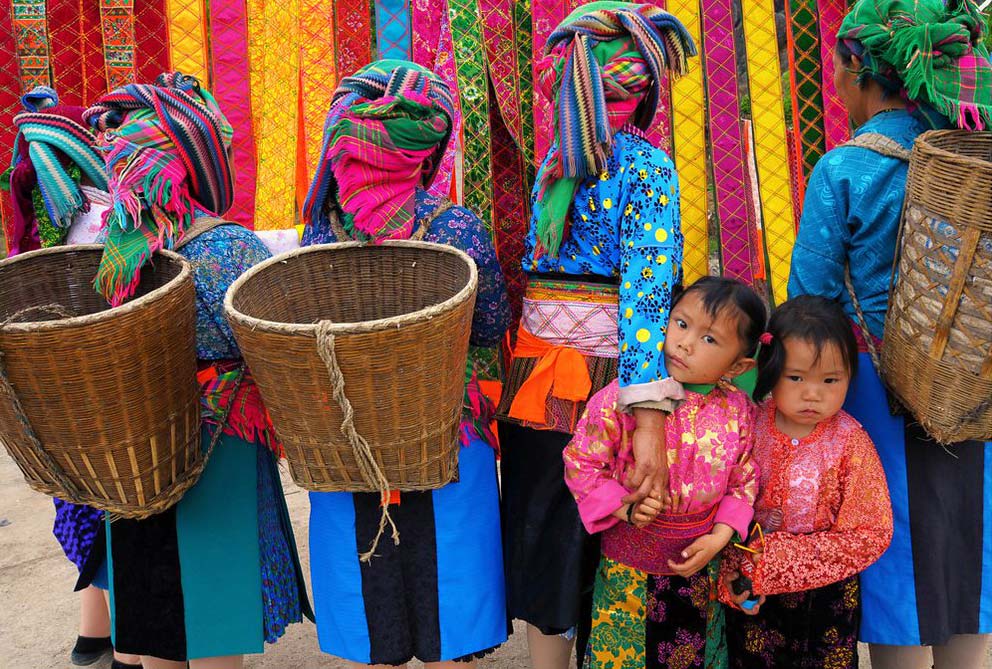Among Ha Giang’s many claims to fame is its amazing diversity of ethnic minorities and the fascinating and lively markets they hold and attend. There are 16 distinct ethnic groups in the province, with the H’mong being the largest as they make up 32% of the total population. The Tay come in second with 25%, and the Kinh (Vietnamese), Nung and Dao all hovering around 10%. The remaining 15% or so of the population is divided among the remaining 11 minorities such as the medium sized Giay, La Chi and Hoa as well as smaller and more threatened groups like the Lo Lo, Phu La and Pu Peo.
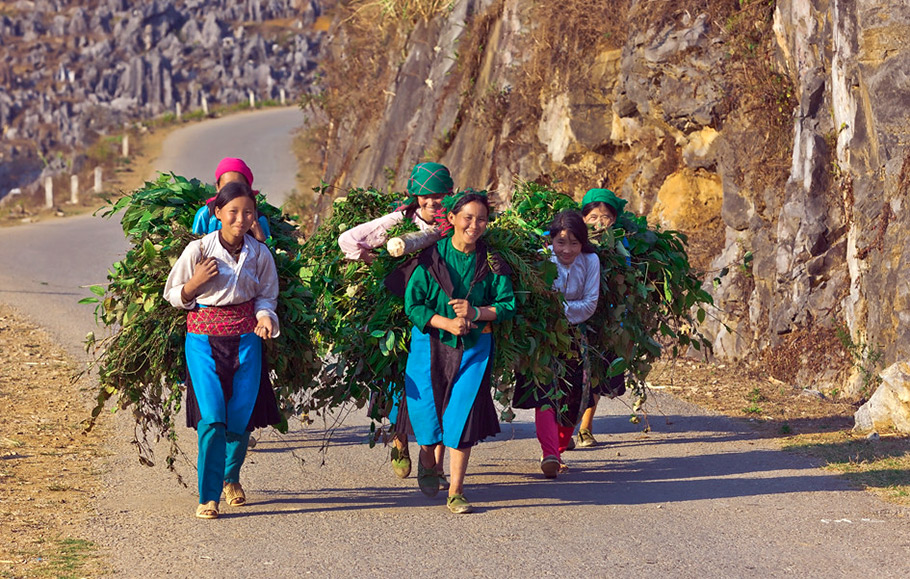
In this article we will shed particular light on the H’mong, being the largest ethnic group, as well as the Lo Lo, who only makes up a small portion of the population in the province, but together with ones in neighbouring Cao Bang and Lao Cai represent the entirety that remains of their culture within Vietnam. Finally we will run through what we believe to be the most exciting and interesting local ethnic markets for you to visit.
H’mong
The H’mong is the largest ethnic group in Ha Giang, and the seventh largest in Vietnam as a whole. With such a large population, their economic activity varies, but generally relies on shifting and sedentary cultivation for agriculture, as well as terraced fields growing maize, wheat and barley. Other proffesions include flax and opium (formerly) cultivation, weaving, and fruit orchards producing apples, pears, peaches and plums. H’mong livestock usually consists of cattle, pigs, chickens and horses with the horses in particular holding a special place within H’mong culture and family life.
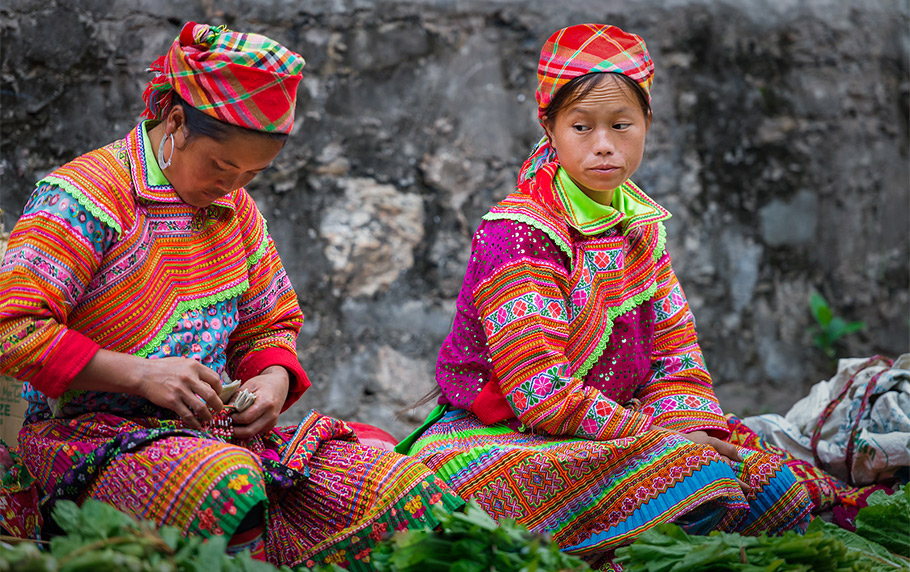
The H’mong can be further subdivided into several subgroups, all identified by the style of their traditional clothing with names like Flower H’mong, Black H’mong, Green H’mong, etc.
Families and ancestry form an important pillar of H’mong life, with great importance and emphasis placed on respecting your elders and ancestors. Each family will have worship practices unique to them, reflected in specific ghosts or spirits that inhabit their homes.
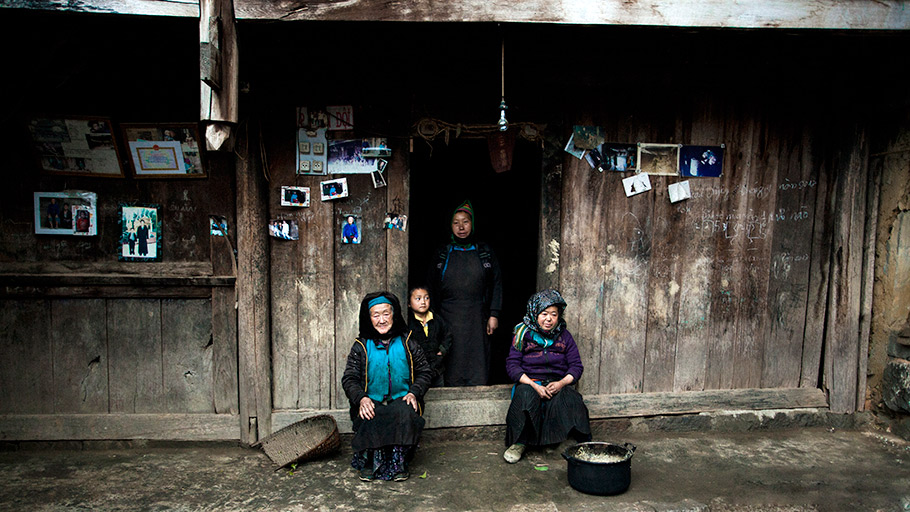
H’mong marriages are not arranged, and couples choose themselves who they wish to marry. Courting is initiated by the boy, who must present his chosen partner with a gift. If this gift is accepted, the boy will attempt to “kidnap” the girl in the following days, taking her away from three days while informing her family what is going on. While this may seem strange, this kidnapping is an entirely symbolic ritual, and after three days the couple (if they both still wish to marry) will return to the girl’s family home and live there until the wedding is held.
Lo Lo
The Lo Lo reside in the districts of Dong Van and Meo Vac. They are a subgroup of the Yi People who reside primarily in China, numbering roughly 2 million there. The name Lo Lo comes from their worship of the tiger, with Lo meaning “tiger” in their dialect. Today only about 1400 Lo Lo remain in Ha Giang, with an additional 2000 or so in neighbouring Lao Cai and Cao Bang combined.
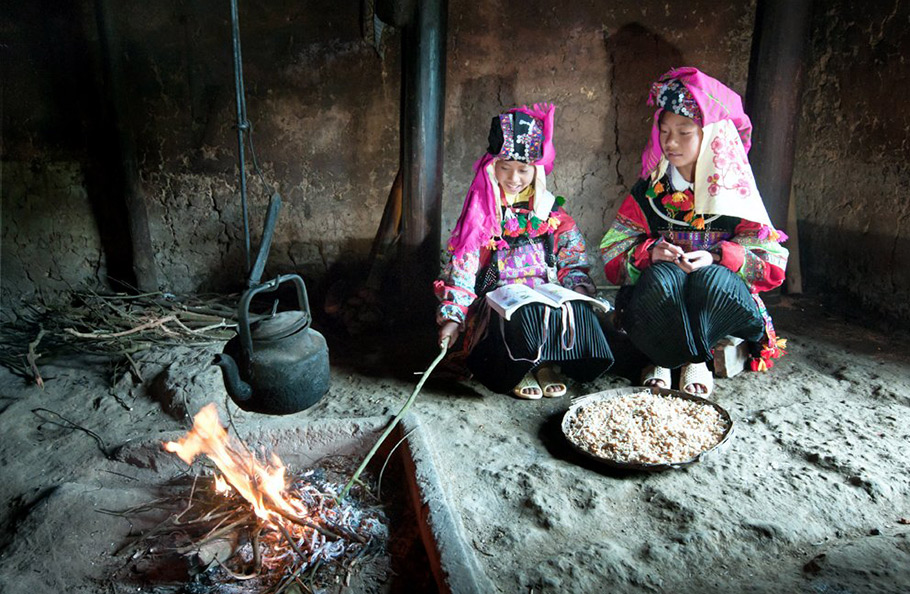
They make their living primarily through agriculture and the villages are located right on the mountain slopes, usually near a source of water. Each village consists of 20 to 30 houses built either on stilts, on the ground or through a combination of both styles.
Traditional clothing for women is comprised of a shirt with a round neck and a rip down the chest, with some subgroups wearing pullovers with a square neck and pants with long legs, while others wrap themselves in short skirts and cover their legs with a type of boot known as “xa cap”. Colours and patterns printed with wax adorns the clothing of both men and women.
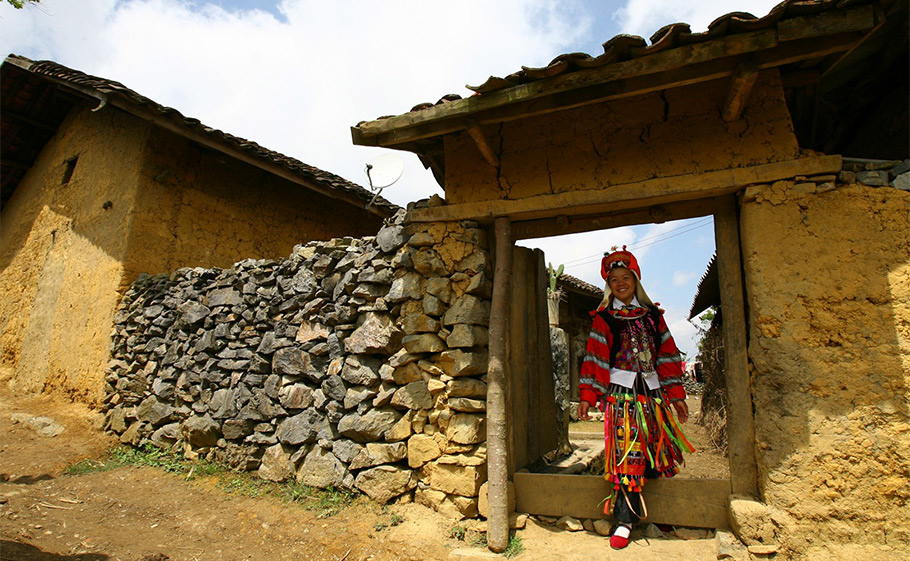
A Lo Lo wedding is usually extravagant and thus represents an important economic calculation for the families involved. Once a couple has married, they live with the family of the husband in their home.
In terms of art, the Lo Lo are known far and wide for their use of the copper drum, their traditional instrument, during weddings and funerals, which is then subsequently buried in a safe location until its next use to prevent degradation.
Ethnic Markets in Ha Giang
While there are countless markets all over Ha Giang Province, visiting the right ones requires some planning, as they are usually only held one day a week, or in one case only once a year! Below are what we consider to be the five “must-see” markets of the province.
Meo Vac Market
Meo Vac Market is held every Sunday in Meo Vac district and serves as both a trading centre and social event for the local Nung, Dao, H’mong and Giay. The H’mong especially use the market as a weekly gathering place where they can meet people they may not have seen for the last week.
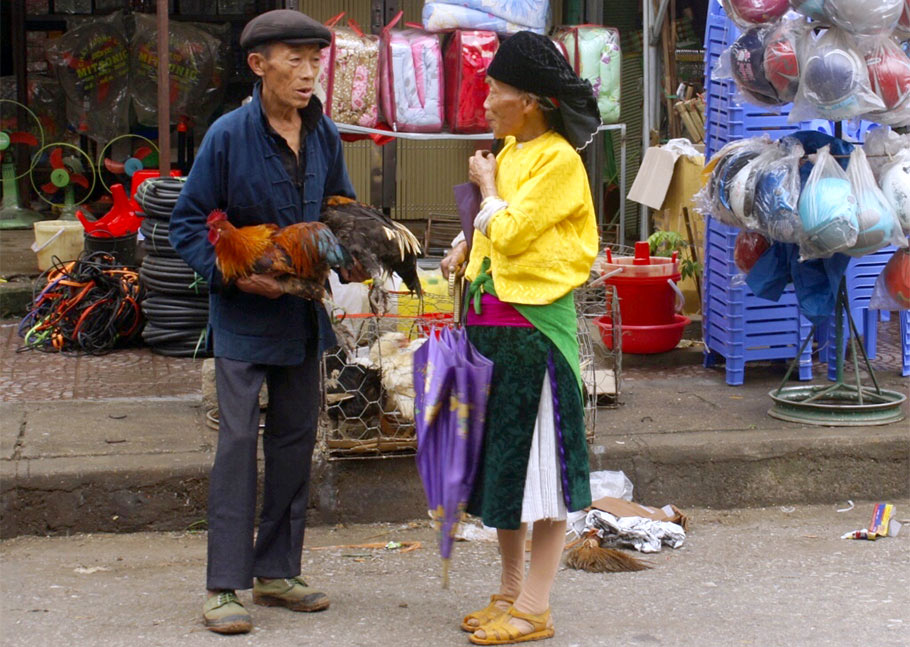
Travellers are generally impressed with the amazing wine section here, with the local women letting you sample any of the rice wine you may be interested in buying.
The primary good that is sold at this market is cattle, and this will probably be evident the moment you arrive. Hundreds of cows are herded to the market every week, where they create a truly chaotic and crazy atmosphere as the locals run around inspecting the animals for sale.
Khau Vai Love Market
Khu Vai Market, better known as the “Love Market” is equal parts heart-warming and tragic. The market stems from a local legend of a young couple of lovers who were not allowed to marry each other by their families. The heartbroken lovers then decided to meet once every year, on the 27th day of the 3rd lunar month, on a nearby mountain, which has now become the date and setting for the market, occurring once a year.
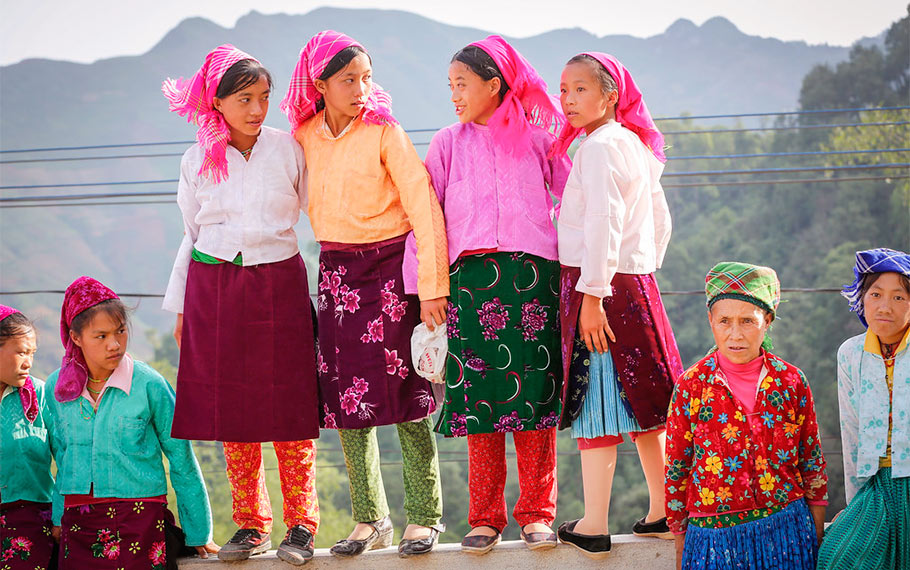
Here the local people go to meet their ex-lovers who for some reason or another they were unable to marry. For many this is a tragic tale as even after years of being married to someone else and having children, they still wish they could have married their old partner, but at least they get to see each other and catch up on the year’s events once a year.
Sticking with the love theme, the market is also a popular place for younger people looking for a potential spouse to court, in the hopes that their families will agree.
Sa Phin Market
Sa Phin Market, known as the “backwards market” for how the date moves one day back every week. For example if the market is on Sunday, it will be held on Saturday in the following week and so on.
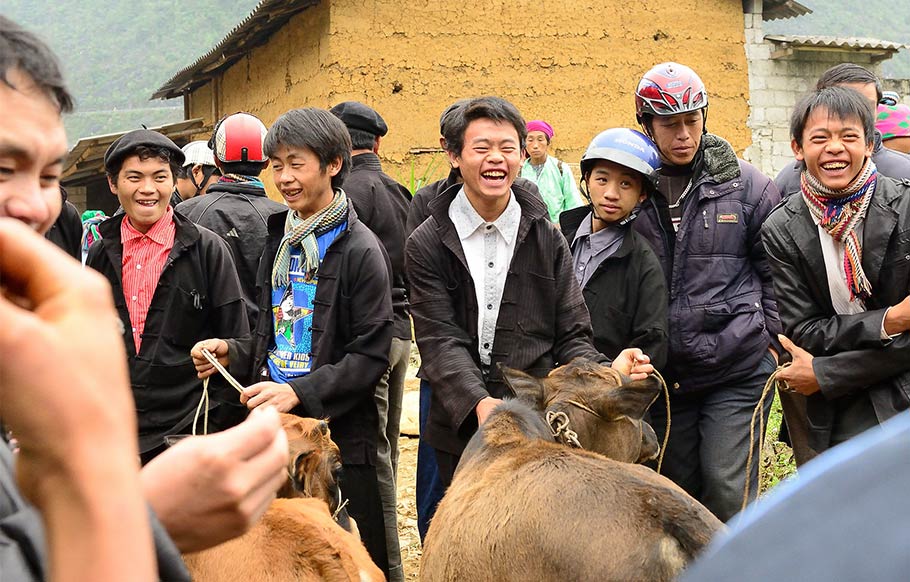
The market is visited mainly by H’mong, and is located close to the attractions of the H’mong Palace and the gorgeous “Heavens Gate” pass, making the market an excellent stop on a day spent visiting these two famous sights. Just make sure you’re there on the right day!
Hoang Su Phi Market
Hoang Su Phi Market is held every Sunday morning along the few kilometres long main street of Vinh Quang Town. It is frequented by H’mong, Dao, Tay, Nung and La Chi and since no one actually knows the origins of the market, may in fact be the oldest in the region. Like others, the market serves as both a place to buy and sell the many colourful goods and somewhere to meet friends from other villages and catch up on the last week.
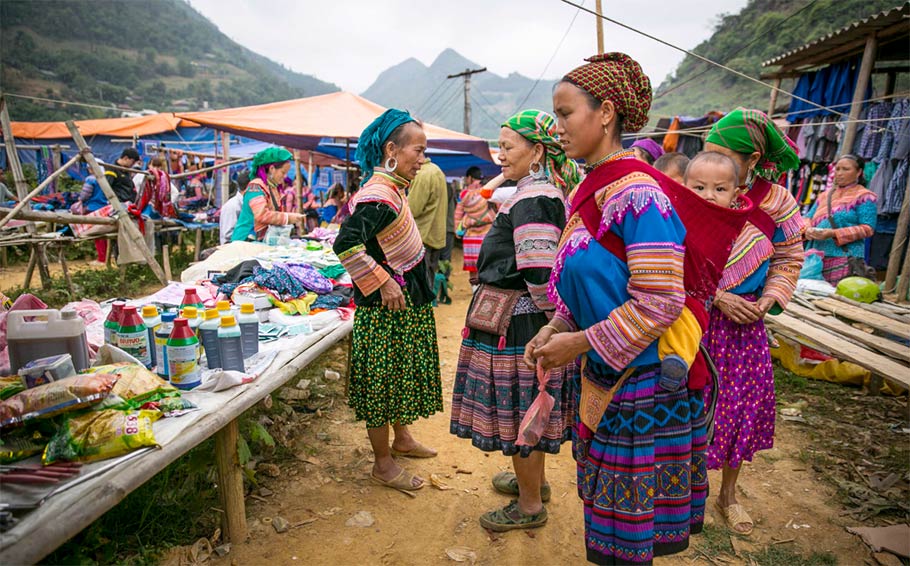
Ma Le Market
Ma Le Market is held every Saturday morning near Lung Cu Peak in Dong Van District. While not as busy and colourful as the other markets in this article, travellers come here to experience a unique beauty born from simplicity as well as a deep feeling of peace and serenity.
